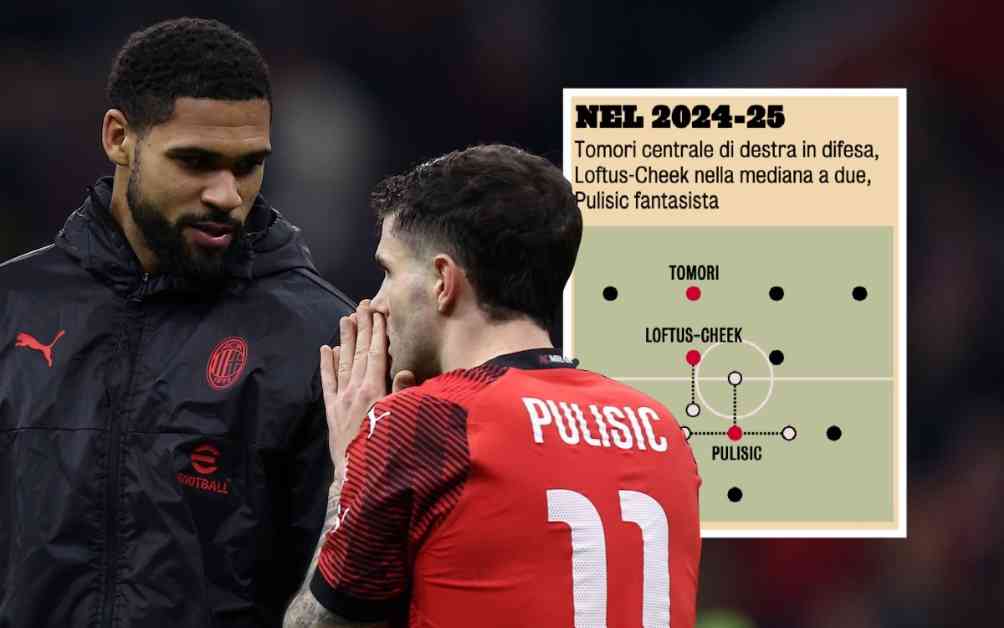AC Milan’s new head coach, Paulo Fonseca, is making significant changes to the team’s structure and player positions compared to his predecessor, Stefano Pioli. According to a report from La Gazzetta dello Sport, Fonseca’s main focus is on reducing the number of opportunities given away to the opposing team, even if it means creating fewer chances for his own team.
Fonseca’s strategy involves using possession to control the pace of the game, encouraging more dribbling, and maintaining a compact team shape. One of the most noticeable changes is the repositioning of certain key players, including Christian Pulisic, Fikayo Tomori, Ruben Loftus-Cheek, Yunus Musah, and Alexis Saelemaekers.
Pulisic, who previously played as a No.10 under Pioli, is now being deployed as a right winger, allowing him to utilize both feet and provide more assists. Fonseca believes that Pulisic’s versatility will make him a more effective playmaker from the middle of the field.
Meanwhile, Loftus-Cheek has transitioned from an attacking midfield role to a deeper position in the double pivot, where he can make use of his physicality and dribbling skills. This shift in responsibilities reflects Fonseca’s tactical preferences and the need for a different style of play.
On the flanks, there have been changes as well. Musah, who was previously used as a wide player under Pioli, is now being deployed as a midfielder. Fonseca sees him as a player who can contribute defensively, win back possession, and drive the team forward with his speed and agility.
Saelemaekers has also undergone a positional change, moving from a right winger to the left flank, where he played during his time at Bologna. This adjustment allows for more competition on the wings, with Noah Okafor vying for a spot in the starting lineup.
In defense, Tomori’s positioning has shifted from the left side of the center-back pairing to the right, with Strahinja Pavlovic taking up the opposite position. This change is aimed at improving the team’s build-up play by allowing the defenders to use their preferred foot more effectively.
Overall, Fonseca’s restructuring of player positions reflects his desire to create a more balanced and cohesive team that is capable of controlling games through possession and intelligent positioning. As the team continues to adapt to these changes, it will be interesting to see how the new tactical approach translates into on-field performance.
